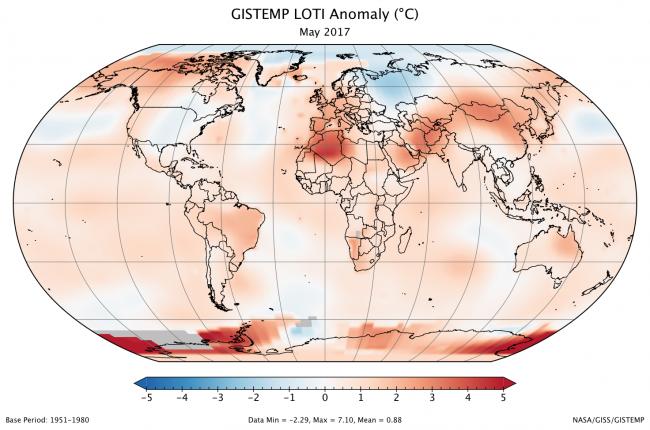
May 2017 was second warmest May on record: NASA
Last month was 0.88 degrees Celsius warmer than the mean May temperature from 1951-1980, read the NASA website.
The two top May temperature anomalies have occurred during the past two years. 2016 was the hottest on record, at 0.93 degrees Celsius warmer than the May mean temperature.
May 2017's temperature was 0.05 degrees Celsius cooler than May 2016. It was just 0.01 degrees Celsius warmer than the third warmest May, which occurred in 2014.
The modern global temperature record begins around 1880 because previous observations didn't cover enough of the planet.
Monthly analyses are sometimes updated when additional data becomes available, and the results are subject to change.
The monthly analysis by the GISS team is assembled from publicly available data acquired by about 6,300 meteorological stations around the world, ship- and buoy-based instruments measuring sea surface temperature, and Antarctic research stations.
Image: NASA website
Support Our Journalism
We cannot do without you.. your contribution supports unbiased journalism
IBNS is not driven by any ism- not wokeism, not racism, not skewed secularism, not hyper right-wing or left liberal ideals, nor by any hardline religious beliefs or hyper nationalism. We want to serve you good old objective news, as they are. We do not judge or preach. We let people decide for themselves. We only try to present factual and well-sourced news.







